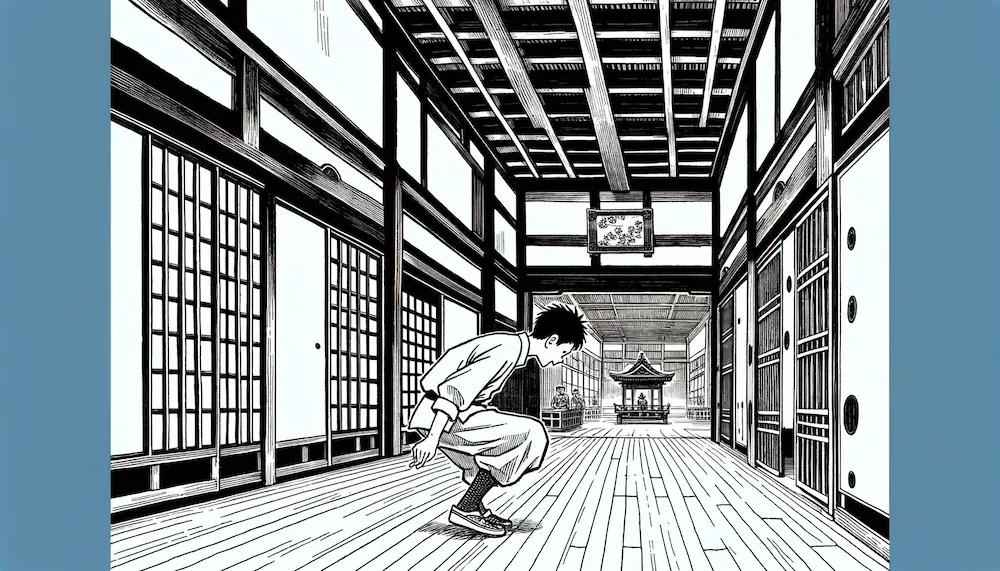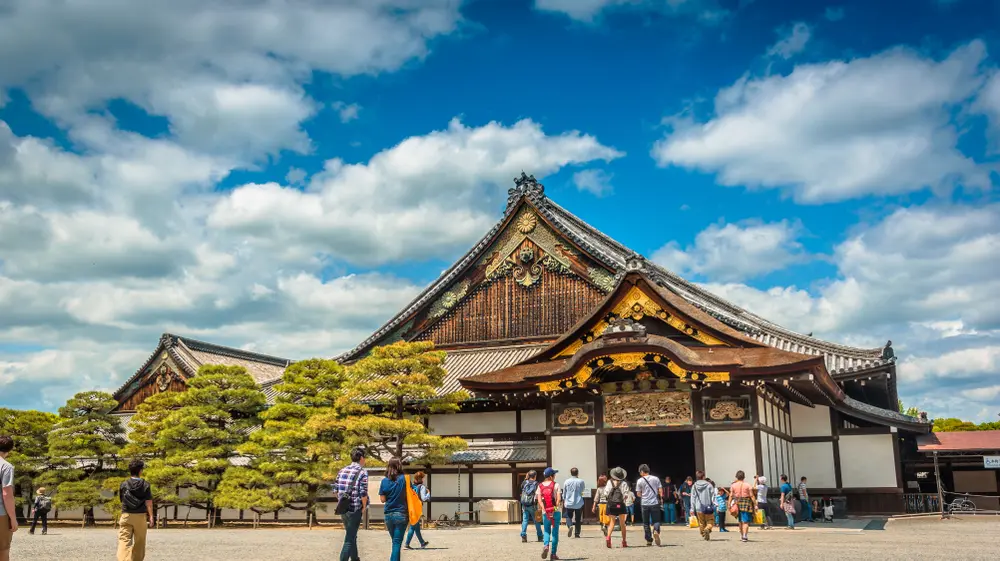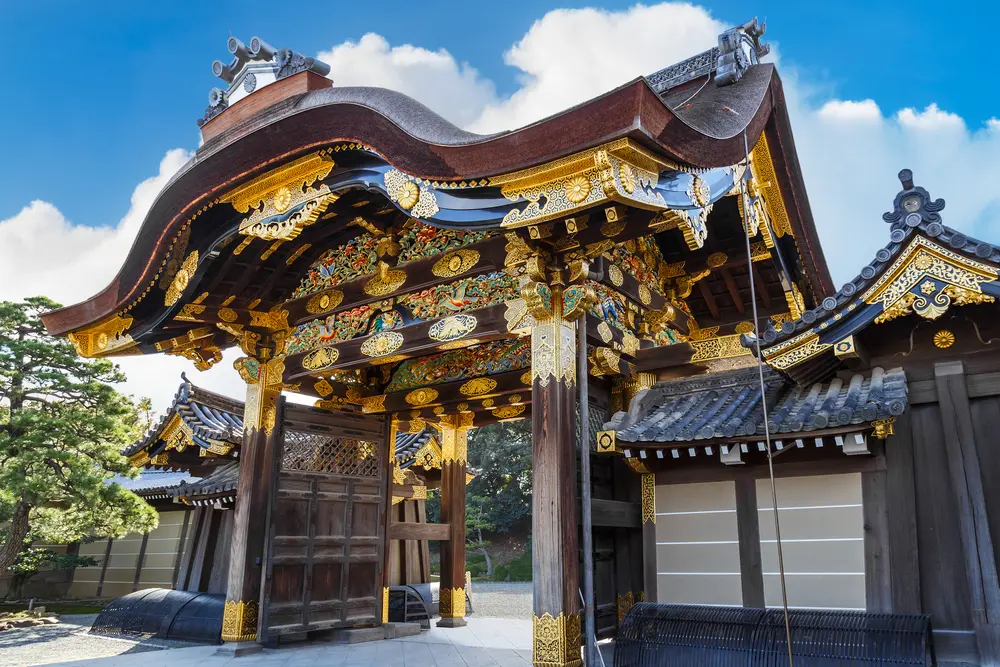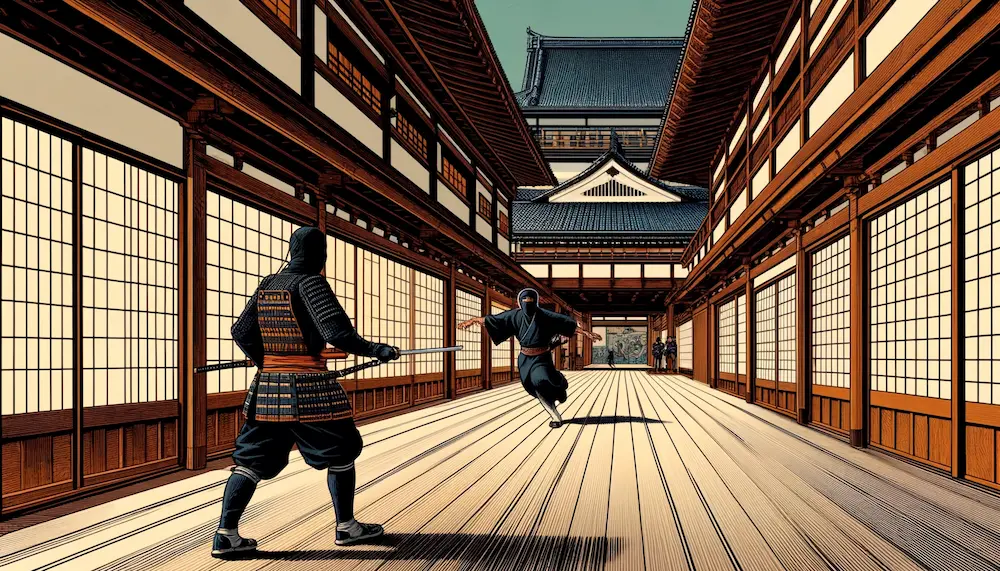Nijo Castle: Kyoto’s Sneak-Squeak Castle – A Step Back in Time
Kyoto is a city that’s practically overflowing with history, but Nijo Castle stands out, even among all those temples and shrines. It’s not just another pretty palace – this place was the heart of power during Japan’s Edo period (1603-1867). And get this, it’s got secret floors that squeak when you walk on them. Seriously!

I remember visiting Nijo Castle as a kid and being totally freaked out by those squeaky floors. I tried so hard to tiptoe around, but it was impossible to be silent. Turns out, that’s exactly what the shogun (the military ruler) wanted. More on that later…
- A Glimpse into Japan’s Shogunate Era
- Ninomaru Palace: Where Art and Power Collide
- The Nightingale Floors: A Squeaky Security System
- Ninomaru Garden: A Zen Oasis
- Honmaru Palace and Gardens: A Glimpse into the Shogun’s Private Life
- Practical Tips for Visiting
- Conclusion: Nijo Castle – More Than Meets the Eye
A Glimpse into Japan’s Shogunate Era

Nijo Castle was built in the early 1600s as the Kyoto residence for the Tokugawa shogunate, the guys who ruled Japan for over 250 years. It was a place to show off their power and wealth, and boy, did they do it right.
The castle complex is huge, covering about 275,000 square meters (that’s like 55 football fields!). It’s got massive stone walls, ornate gates, and several buildings, including the main palace (Ninomaru Palace) and the shogun’s private residence (Honmaru Palace).
But Nijo Castle wasn’t just for parties and parades. It played a key role in some major historical events, like the 1867 ceremony where the last shogun returned power to the emperor, marking the end of the Edo period.
Ninomaru Palace: Where Art and Power Collide
The Ninomaru Palace is where the shogun conducted official business and entertained guests. And let me tell you, this place is decked out. Think gold leaf, intricate wood carvings, and sliding doors painted with scenes of nature and mythology. It’s like stepping into a museum, only way more opulent.
Each room has a unique purpose and design. There’s the shogun’s reception room, where he met with important officials, the Grand Hall, used for ceremonies and banquets, and even a room specifically for the shogun’s wife.

One of the most impressive features is the Karamon Gate, the main entrance to the palace. It’s considered a national treasure and is covered in intricate carvings of dragons, tigers, and other mythical creatures.
The Nightingale Floors: A Squeaky Security System

Now, let’s talk about those squeaky floors. They’re called “uguisubari” in Japanese, which means “nightingale floors.” And they’re not just a quirky design feature – they were a genius security system.
The floors are made with special nails that rub against metal brackets when you walk on them, creating a chirping sound like a nightingale. This was meant to alert the shogun to any intruders sneaking around. Pretty clever, huh?
When you visit, be sure to try walking on the floors and see if you can do it silently (spoiler alert: you probably can’t!). It’s a fun way to experience a bit of history firsthand.
Ninomaru Garden: A Zen Oasis
After exploring the palace, take a stroll through the Ninomaru Garden. It’s a classic example of a Japanese garden, designed to create a sense of peace and harmony. There’s a large pond, carefully placed rocks, and trees that change with the seasons. It’s the perfect place to relax and reflect after taking in all the history and grandeur of the castle.
Honmaru Palace and Gardens: A Glimpse into the Shogun’s Private Life
The Honmaru Palace is where the shogun lived with his family, so it’s a bit more private and less flashy than the Ninomaru Palace. It’s still worth a visit, though, to see how the shogun lived and to check out the Honmaru Garden, which has a different style than the Ninomaru Garden.
Practical Tips for Visiting
- Opening Hours: 8:45 am to 4 pm (entry until 3:45 pm)
- Admission: 620 yen (about $6 USD)
- Transportation: Take the Tozai Subway Line to Nijojo-mae Station
- Guided Tours: Available in English and Japanese
- Photography: Allowed in most areas, but no flash photography inside the buildings
Conclusion: Nijo Castle – More Than Meets the Eye
Nijo Castle is a fascinating window into Japan’s past. It’s not just a beautiful building – it’s a place where history comes alive. From the squeaky floors to the opulent rooms and peaceful gardens, there’s something to discover around every corner. So put on your ninja shoes (or just regular ones) and get ready for an adventure back in time.
Reviews from Visitors
There are no reviews yet. Be the first one to write one.









